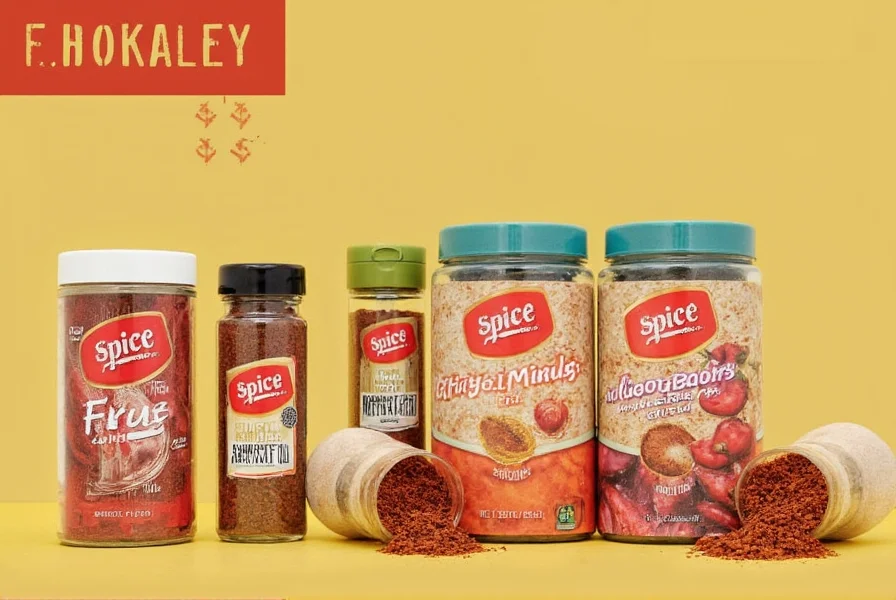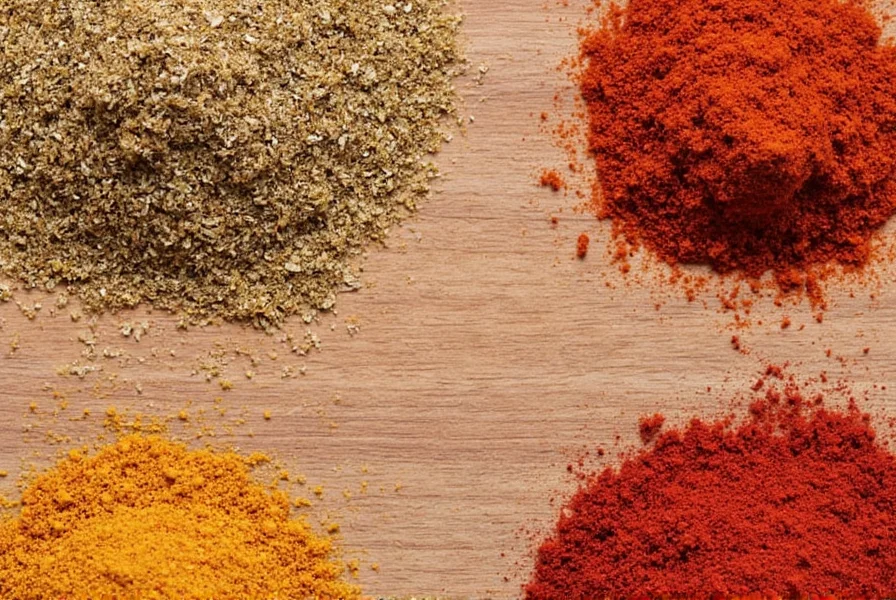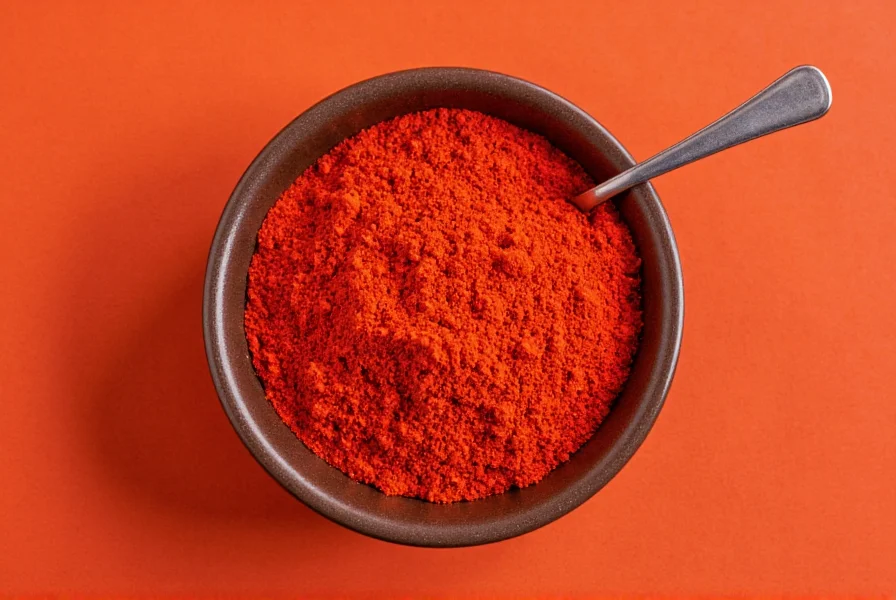Table of Contents
Introduction
Harissa is not a single spice; it's a spicy paste made from roasted peppers, garlic, and spices. This North African condiment is often mistaken for a spice, but it's actually a blend of multiple ingredients. In this guide, we'll explain exactly what harissa is, how to use it in cooking, and how to choose the best brand for your dishes.

What Is Harissa?
Harissa is a vibrant, spicy paste that originates from North Africa, particularly from countries like Tunisia, Algeria, and Morocco. It's made by blending roasted red peppers, garlic, olive oil, and a variety of spices such as cumin, coriander, and paprika. Some versions also include chili peppers for extra heat. The result is a thick, aromatic paste that can be used as a seasoning, a condiment, or even a marinade.
While harissa is often used in stews, tagines, and grilled meats, its versatility makes it a favorite among chefs and home cooks alike. It adds depth, smokiness, and a kick of heat to any dish. But again, the burning question remains: is harissa a spice?
Is Harissa a Spice?
Let's break it down. A spice is typically defined as a dried plant substance used for flavoring food. Common examples include black pepper, cinnamon, and turmeric. Now, when it comes to harissa, it's not a single spice—it's a mixture of spices blended with other ingredients like peppers, garlic, and oil. So, in that sense, harissa is more than just a spice; it's a spice blend or a spice paste.
That said, many people still refer to harissa as a spice because of its strong, aromatic qualities and its ability to add bold flavor to dishes. In some contexts, it's even sold in powdered form, which can be misleading. However, the traditional version is a paste, so it's best categorized as a spice-based condiment rather than a single spice.
In short, while harissa contains spices, it's not a single spice on its own. Instead, it's a complex blend that functions similarly to a spice mix.
Spice Basics: What You Need to Know
Before diving deeper into harissa, let's take a quick refresher on spices. Spices are natural seasonings derived from the seeds, bark, roots, or fruits of plants. They're used to enhance the flavor of food, and they come in various forms—whole, ground, or liquid. Some common spices include:
- Cumin
- Cinnamon
- Ginger
- Paprika
- Cayenne Pepper
Now, compare that to harissa. While it includes some of these spices, it's not just one ingredient—it's a combination. That means it falls under the broader category of spice blends or spice pastes. Think of it as the chili version of curry powder or garam masala. It's a tool for adding heat and complexity, much like a spice mix would.

Practical Tips for Using Harissa
Harissa is incredibly versatile, but using it effectively requires a bit of know-how. Here are some practical tips to help you make the most of this fiery paste:
- Start Small: Harissa can be very spicy, especially if it contains fresh chili peppers. Begin with a small amount and adjust to your taste.
- Use It as a Base: Add a spoonful of harissa to soups, stews, or sauces to give them an extra layer of flavor and heat.
- Mix It Into Marinades: Harissa works wonders in meat and vegetable marinades. Its bold flavor helps tenderize and infuse your ingredients with deep, smoky notes.
- Make Your Own: If you're feeling adventurous, try making your own harissa at home. You can control the level of heat and customize the flavors to your liking.
- Pair It With Creamy Ingredients: The heat of harissa can be balanced with dairy products like yogurt, sour cream, or even cheese. This creates a nice contrast and makes it more palatable for those who aren't used to intense heat.
With a little experimentation, you'll find that harissa can elevate almost any dish. Whether you're grilling, roasting, or simmering, it's a game-changer.
Buying Guide: How to Choose the Best Harissa
Key Features to Look For
- Ingredients: Look for high-quality, natural ingredients. The best harissas contain roasted peppers, garlic, and real spices like cumin and coriander. Avoid those with artificial preservatives or fillers.
- Heat Level: Harissa can vary greatly in heat. Some are mild, while others are extremely spicy. Choose based on your tolerance level. If you're unsure, start with a milder version.
- Texture: Traditional harissa has a smooth, creamy texture. If it's too gritty or dry, it may not be authentic.
- Brand Reputation: Stick with reputable brands known for quality and authenticity. Brands like Harissa by Osmancik or Berbere are popular choices.
Best Uses and Target Audience
Harissa is perfect for anyone who loves bold, smoky, and spicy flavors. It's ideal for:
- Cooking North African or Mediterranean dishes
- Creating unique marinades and dressings
- Adding heat to dips, soups, and stews
- Experimenting with global cuisine
It's great for both amateur cooks looking to expand their flavor palette and professionals seeking to add depth to their dishes.
Recommended Products
| Product Name | Features | Advantages | Target Audience | Suitable Occasions |
|---|---|---|---|---|
| Harissa by Osmancik | Roasted red peppers, garlic, cumin, coriander | Smooth texture, balanced heat, authentic flavor | Chefs, home cooks, spice enthusiasts | Grilling, roasting, stews, tagines |
| Berbere Harissa | Includes chili, paprika, ginger | Vibrant flavor, rich aroma, good for spice lovers | Spice connoisseurs, adventurous eaters | Meat dishes, vegetable sides, dipping sauces |
| Harissa Paste by La Vaca Loca | Organic ingredients, no added preservatives | Fresh, bold, and versatile | Eco-conscious consumers, health-focused cooks | Marinades, salads, dips |
Frequently Asked Questions
Is harissa considered a spice?
Harissa is not technically a single spice, but rather a spice blend or paste. While it contains multiple spices like cumin, coriander, and paprika, it also includes other ingredients such as roasted peppers, garlic, and olive oil. So while many people refer to it as a "spice," it's more accurately categorized as a spice-based condiment or spice paste.
What are the key ingredients in traditional harissa?
Traditional harissa contains roasted red peppers, garlic, olive oil, and a blend of spices including cumin, coriander, and paprika. Some variations may include additional chili peppers for extra heat. Authentic harissa should have natural ingredients without artificial preservatives or fillers.
How can I use harissa in cooking?
Harissa is incredibly versatile. You can use it as a base for soups and stews, in marinades for meats and vegetables, mixed with creamy ingredients like yogurt to balance the heat, or as a condiment. Start with small amounts since it can be quite spicy, and adjust to your taste preferences.
Is there a difference between harissa paste and harissa powder?
Yes, there is a significant difference. Traditional harissa is a paste made with roasted peppers, garlic, oil, and spices. Some companies sell "harissa powder," which is essentially just the spice blend without the liquid components. The paste version is more authentic and provides a more complex flavor profile, while the powder is more concentrated and has a longer shelf life.
How spicy is harissa typically?
Harissa can range from mildly spicy to extremely hot, depending on the variety of peppers used and their quantity. Traditional Tunisian harissa tends to be quite hot, while some commercial versions may be milder. If you're new to harissa, it's best to start with a small amount and gradually increase to achieve your desired heat level.
Conclusion
To sum it up: harissa is not a single spice; it's a complex spice-based condiment. Whether you're a seasoned chef or a curious foodie, harissa is a must-have in your kitchen for adding bold, authentic North African flavors.
So the next time someone asks, "Is harissa a spice?" you can confidently say: it's more than just a spice—it's a flavor powerhouse. And now you know why.
Remember, the key to unlocking the full potential of harissa is to experiment, play with flavors, and have fun in the kitchen. After all, the best meals are the ones that surprise you—and maybe leave you a little sweaty and satisfied.











 浙公网安备
33010002000092号
浙公网安备
33010002000092号 浙B2-20120091-4
浙B2-20120091-4